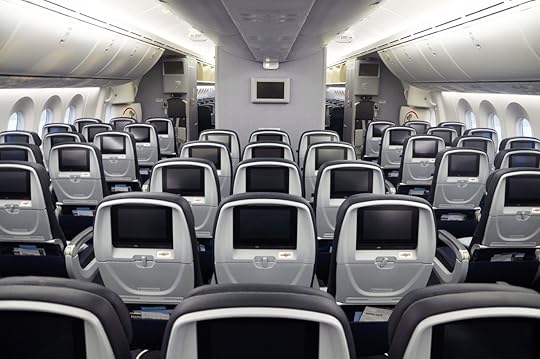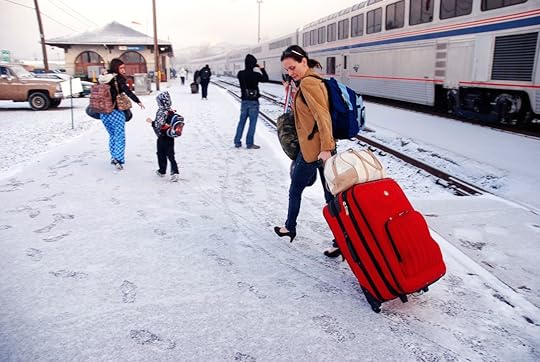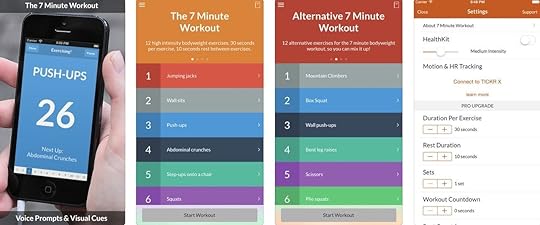Matador Network's Blog, page 1153
February 27, 2019
Best pizza in Chicago

Chicago is a great town for pizza, but also a misunderstood one. When most people think about pizza in Chicago, what comes to mind is deep dish, the inch-and-a-half thick pizza popular with tourists around downtown. It’s better to think about deep dish as one style of Chicago pizza, not the style. Locals do eat deep dish, but not nearly as much as they eat Chicago tavern-style pizza, which we just call “thin crust.”
The true Chicago style of pizza has an incredibly thin crust that is rolled out, not tossed like a New York pizza. This makes for a crust that is almost like a cracker, and pizza that isn’t meant to be folded. Chicago tavern-style pizza is also cut into squares, not triangular pie slices, which apparently seems insane to outsiders but perfectly normal to us. However you like it, deep dish or tavern-style, here’s our list of the 10 best pizza places in Chicago.
1. Pizzeria Uno

Photo: Uno Pizzeria & Grill/Facebook
Pizzeria Uno is the originator, the creator, the OG of Chicago deep dish pizza. Opened by an entrepreneur named Ike Sewell in 1943, the actual recipe was created by one Rudy Malnati Sr. It now has franchises around the country, but the original River North location still stands, serving up those famous pizzas to Chicagoans (mostly when they have out of town friends visiting). The second location, Pizzeria Due is right down the street serving up the same pies.
Where: 29 East Ohio, Chicago, IL 60611
2. Phil’s Pizza
Just down the road from the Chicago White Sox’s South Side stadium, Phil’s Pizza is recognized as doing some of the best thin crust in the city. The thin, crispy crust has a great snap to it but is still enough to support a serious load of cheese and toppings. Order it topped with its homemade sausage and you’ll be rewarded with a perfect pizza covered in huge chunks of cheesy, meaty goodness.
Where: 1102 W 35th St, Chicago, IL 60609
3. Pizano’s
Pizano’s is another spot founded by a member of the first family of deep dish. Rudy Malnati Jr., son of the inventor of this Chicago classic opened his River North pizzeria in 1991. Pizano’s does a similar buttercrust to Rudy Jr.’s brother Lou’s famous pizzas, but he cooks the edges hotter to get some caramelization in the crust. Some people swear by it, others prefer Lou’s.
Where: 61 E Madison St, Chicago, IL 60603
4. Lou Malnati’s

Photo: Lou Malnati’s/Facebook
In 1970, Lou Malnati took his decades of experience at Pizzeria Uno working with his father and opened Lou Malnati’s Pizzeria in the suburb of Lincolnwood. The deep dish pizzas were a hit from the start, and today the company has 54 locations around the city and suburbs, and is a favorite of many Chicagoans due to the signature garlic buttercrust.
Where: 439 N Wells St, Chicago, IL 60654
5. Vito & Nick’s
A South Side favorite for Chicago thin crust, Vito & Nick’s uses an old Sicilian family recipe to make a near-perfect sausage pizza. Staying true to old tradition, Vito & Nick’s prides itself on not delivering. If you want the good stuff, you have to go in for it.
Where: 8433 S Pulaski Rd, Chicago, IL 60652
6. Nancy’s Stuffed Pizza

Photo: Nancy’s Pizza/Facebook
Nancy’s Pizza has a truly Chicago story. It begins back in the ‘70s with a recent Italian immigrant trying to innovate around deep dish by adding a second thin layer of crust above the cheese but below the toppings and tomato sauce. It moves on to a huge rivalry between competing families, complete with some major arson and criminal prosecution. Today it has moved beyond that, and Nancy’s has dozens of locations, and stuffed pizza is a widely accepted and imitated variation on deep dish that can be found all over the city.
Where: 2930 N Broadway, Chicago, IL 60657
7. Pizza Castle
The name might sound like a place that does kid’s birthday parties, but don’t be fooled. Pizza Castle, over 45 years old, is a South Side institution for thin crust pizza. It’s about as simple and no-frills as it gets, from the strip mall location to the counter service business model, but the pizzas and homemade fennel sausage are staggeringly good.
Where: 3256 W 55th St, Chicago, IL 60632
8. Art of Pizza

Photo: The Art of Pizza/Facebook
A longtime favorite on the North Side, Art of Pizza does some of the city’s best deep dish from a single location in Lakeview. Its thin crust is damn good as well, and no matter what style you order you’re sure to get a generous helping of cheese and toppings. You can’t go wrong ordering a thin or deep dish Art’s Special — sausage, onion, mushroom, and green pepper, with just the right amount of cheese and red sauce to balance it all out.
Where: 3033 N Ashland Ave, Chicago, IL 60657
9. Rosangela’s Pizzeria
Way down in south suburban Evergreen Park, Rosangela’s Pizzeria does some of Chicago’s best thin crust. Like any good Chicago tavern-style pizza, the ultra-thin crust is crispy and light, but strong enough to support a big load of cheese and toppings, preferably sausage.
Where: 2702, 2807 1/2 95th St, Evergreen Park, IL 60805
10. Pequod’s Pizza

Photo: Pequod’s Pizza Chicago/Facebook
Burt Katz, a Chicago pizza legend, opened the original Pequod’s Pizza in Morton Grove in 1970. The innovation he brought to deep dish was the caramelized (but not burnt) crust. Although Pequod’s, and the equally good Burt’s Place are no longer owned by Burt, they still do that perfect crust today. Pequod’s has a location in the city as well, so you don’t have to trek out to the ‘burbs.
Where: 2207 N Clybourn Ave, Chicago, IL 60614 

More like this: The 11 best films set in Chicago to inspire your visit
The post The 10 best pizza places in Chicago appeared first on Matador Network.

Mummy’s head stolen from church

Grave robbing might sound like a crime from a bygone era, but apparently it’s still alive and well. On Monday, police discovered that the head of a mummified Crusader was stolen from the crypt of a church in Dublin, Ireland. The mummified body of a nun who died 300 years ago, as well as a section of the crypt containing the bodies of William Rowan Hamilton’s family were also badly damaged.
“The Crusader,” St. Michan’s church’s most famous mummified occupant, was 800 years old, and was clearly the main target of the vandals. Reverend David Pierpoint, the vicar of St. Michan’s and archdeacon of Dublin, said, “His legs were pushed up into his torso, his arms were moved to one side and his head has been decapitated. His head is gone.”
The mummy earned the “Crusader” nickname due to the way his dead body was positioned — with arms and legs crossed — which was common for those who took part in the Crusades.
View this post on InstagramA post shared by (@heckkate) on Feb 11, 2019 at 1:41pm PST
Until now, it was possible for visitors to view the mummified bodies in open coffins and even shake “The Crusader’s” hand for good luck. But, following the incident, church officials are concerned they may need to close the crypt permanently.
It is clear that the hoodlums came prepared with tools, but the motive for the break-in is still undetermined as authorities claim there is no commercial market for stolen relics. Church officials are eager to restore the Crusader’s head to its rightful place before it disintegrates aboveground, where humidity conditions are not ideal, unlike in the crypt.
This isn’t the first break-in at St. Michan’s. In 1996, three teenagers broke into a different section of the crypt, dragged corpses into the churchyard, and played football with the head of a little girl. 
H/T: The New York Times

More like this: 7 of the world’s coolest-looking churches you didn’t know existed
The post 800-year-old mummy decapitated in Dublin church appeared first on Matador Network.

Recreational cannabis dispensaries

The first recreational cannabis sales in the City of Sin started on July 1, 2017. Las Vegas, Nevada, hasn’t looked back, and has in many ways given dispensaries the full Vegas treatment with flashy lights and showy service — especially compared to the more laid-back atmosphere of Denver’s best dispensaries. The areas of Las Vegas, North Las Vegas, and Henderson have more than 20 dispensaries to choose from, with more than 20 more dispensaries in Clark County. Some, of course, are better than others for both tourists and locals.
First-time visitors should be sure to check out our guide for their first recreational cannabis dispensary visit, then head out to the seven best shops in Las Vegas.
1. Essence
There’s only one dispensary on the Vegas strip, and luckily for everyone walking by, it’s a good one. Along with the convenient location, Essence has good quality products and helpful budtenders. The ambiance is cool luxury, and the vast selection warrants a couple trips if you have the time. For tourists just passing through, you can do a lot worse than coming here in between your shows and gambling trips. In addition to the strip location, Essence has dispensaries in Henderson and Tropicana West.
Location: 2307 S Las Vegas Blvd, Las Vegas, NV 89104
2. Jardin

Photo: Jardin Vegas/Facebook
The clean and modern space gives off a sense of professionalism that can change the mind of anyone who still has any lingering doubts about this whole cannabis being legal business. The staff at Jardin is knowledgeable and can answer questions about any of the many edibles, smokables, and other products stocked on the shelves and in the glass cases. First-time visitors frequently qualify for specials (as do Nevada locals), and there are occasionally happy hour specials on edibles and CBD.
Location: 2900 E Desert Inn Rd Las Vegas, NV 89121
3. The Source
People looking for wax and concentrates should head straight to The Source. It’s a bit on the smaller side and there are fewer options when it comes to other products compared to places on this list. The clean layout makes up for any short wait outside, and if you have a general idea of what you’re looking for you can easily get in and out. If you don’t, you don’t have to worry because there are plenty of helpful people on staff to narrow down your choices for you and answer any questions.
Location: 2550 S Rainbow Blvd Suite 8 Las Vegas, NV
4. Planet 13

Photo: Planet 13 Las Vegas/Facebook
Vegas is home to the gaudiest of architecture and the most extravagant of shows, so it’s no surprise that it’s also where the most theme park-esque dispensary is located. Planet 13 is 40,000 square feet of a multi-sensory cannabis experience. A 15-foot LED display in the shape of a lotus flower is on the roof and switches out colors with the press of a button. Then there’s the LED water display that can be seen from 65,000 hotel rooms. As for the actual cannabis, Planet 13 packs a wide selection into 16,500 square feet of retail space with 42 registers.
Location: 2548 W Desert Inn Rd, Las Vegas, NV 89109
5. The Apothecary Shoppe

Photo: Jonathan Weiss/Shutterstock
The Apothecary Shoppe was started by doctors and keeps the business rooted in science on both the medical and recreational side of the business. All of the cannabis products are grown locally without pesticides, and the edible selection has won recognition from the Nevada Dispensary Association. Major bonus: The shop is open 24 hours so you can stop by at any point in time.
Location: 4240 W Flamingo Rd #100 Las Vegas, NV
6. Reef Dispensaries
It’s not on the strip, but it’s about as close as you can get. Home to more than 100 different cannabis products, Reef Dispensaries is the only place you can get Wiz Khalifa’s Khalifa Kush (as well as an in-house line of flower and edibles). The shop has a 165,000-square-foot grow area attached to it ensuring products are stocked. It’s open 24 hours, and Nevada locals, senior citizens, and veterans get 10 percent off every purchase.
Location: 3400 Western Ave Las Vegas, NV 89109
7. Pisos

Photo: Pisos/Facebook
Pisos has more than 50 strains of flower and just as many types of product, so there’s something for every type of cannabis consumer here. If you’re in a rush and don’t want anything too fancy, browse the many pre-rolls with house cannabis. Tip: head there after 12:30 PM and before 7:30 AM for specials. If you can’t make it, there are frequent deals for first-timers and regulars.
Location: 4110 S Maryland Pkwy Las Vegas, NV 89119 

More like this: Everything to know before your first recreational marijuana dispensary visit
The post The 7 best recreational cannabis dispensaries in Las Vegas appeared first on Matador Network.

February 26, 2019
US airlines' seatback screen cameras

It might not make passengers feel any better about their privacy, but at least now the secret is out in the open. Seatback screens on United and Delta Airlines have built-in cameras though both airlines claim the cameras are not active. The cameras, primarily found in screens in premium economy class, were included by the manufacturer of the entertainment systems as a standard feature for potential video conferencing, though a United spokesperson told BuzzFeed News that the airline has “no plans to use them in the future.”
In a statement, Panasonic — the manufacturer of these entertainment systems — said it “will never activate any feature of functionality with an IFE system without explicit direction from an airline customer” and that “the cameras have simply been included to support potential future applications like seat-to-seat video conferencing.” The airlines confirm this statement, assuring passengers the cameras have never been used, and there are no plans to use them in the future.
Despite these assurances, some passengers are already expressing their concerns on Twitter.
As a general answer to the question of what I got to hide? My privacy.
Do I expect to have the same level of privacy in an aircraft like I have at home, ofc not. Still wish not to be monitored if possible
— DaCoolX (@DaCoolX) February 19, 2019
Regardless of airline promises, in an age where a premium is placed on privacy, passengers are always likely to be wary of the possibility (however small) of being secretly filmed. 
H/T: BuzzFeed News

More like this: 7 artsy plane interiors that make flying a whole lot cooler
The post United and Delta confirm that some of their seatback screens have cameras appeared first on Matador Network.

Amtrak stuck for 36 hours in Oregon

An Amtrak train stranded for 36 hours, with 183 people on board, has finally returned to Eugene, Oregon. But not without its fair share of hardship. While the train was en route to Los Angeles on Sunday, it hit a tree that had fallen onto the tracks and was rendered inoperable. Heavy snowfall covering the tracks further complicated matters, turning the ride into a 36-hour ordeal.
Tim McMahan, a spokesperson for Union Pacific Railroad, told CNN that the train ceased working in Oakridge, Oregon, “due to weather conditions and downed trees. UP crews worked overnight to clear the tracks.” Of their slow progress earlier today, passenger Emilie Wyrick told CNN, “We’ll move for a few hundred yards, then we stop. It’s going to be like this for hours.”
Race to rescue 183 people stranded on an Amtrak train. @WillCarr has the story. https://t.co/TVz7wigsVY pic.twitter.com/BJru40SVlh
— Good Morning America (@GMA) February 26, 2019
During the incident, the area had been experiencing record-setting snowfall. By Tuesday morning over a foot had accumulated in Oakridge, with Eugene seeing 9.5 inches on Monday. While it might sound like giving passengers alternate transportation might have been the best option, Scot Naparstek, Amtrak Executive Vice President and COO, said it was actually safer to leave them on the train. “With local power outages and blocked roads,” he said, “it was decided the safest place for our customers was to remain on the train where we were able to provide food, heat, electricity, and toilets.” He added that customers would be given refunds and other compensation for the inconvenience.
Surprisingly, spirits aboard the train remained high. The warm, spontaneous camaraderie made the episode unexpectedly bearable for many on board. Passenger Rebekah Dodson said, “It’s just been like a giant kumbaya party. Strangers are playing cards. A teenager played his ukulele to kids to get them to sleep. Ladies who have never met before were dancing in aisles.” And despite the circumstances being similar to a famous Agatha Christie novel, no murder mysteries unfolded.
Despite the fun that may have been had, however, we’re sure all passengers are happy to be safely back in Eugene — even if they didn’t ultimately reach their desired destination. 
H/T: Travel & Leisure

More like this: The 11 most beautiful train stations around the world
The post 183 passengers were stranded on this Amtrak train in Oregon for 36 hours appeared first on Matador Network.

Python hid in woman’s plane luggage

Stowing away in an airplane is pretty difficult these days — unless you’re a snake, apparently. After her flight from Queensland, Australia, to Scotland, this woman discovered an unexpected flying companion hidden away in her luggage. While unpacking, Maria Boxall found a python curled up in her shoe; it had made itself so at home, in fact, that it even molted its skin inside the shoe. At first, she thought it was a practical joke, but when it began to move she realized the snake was very much real — and alive.
Snake on a plane! A woman from Bridge of Allan’s found more than she bargained for when she unpacked her suitcase following a holiday in Australia. The spotted python’s now being looked after by the @ScottishSPCA
Best fitness apps in 2019 for travel

Travel is a great time to break out of normal routines and be open to new experiences. Each city is an opportunity to explore different foods, cultures, and even ways to get fit. Your next trip doesn’t have to derail your fitness goals. If you travel with your phone, you have access to a great workout right in the palm of your hand. Here are 10 of my favorite apps for working out on the road.
1. If you want to stay hydrated: My Water Balance

Photo: My Water Balance
Drinking enough water is important for both your workouts and general overall health while traveling. A quick way to derail a workout or, even worse, an entire day is dehydration. Track your daily water consumption with My Water Balance. It will adjust based on your activity, climate, and the other beverages you are consuming. This means if you have a few beers, it will encourage even more water. And remember, when traveling internationally, don’t just reach for any tap. Do some research on the safety of local water before filling your water bottle or opt for bottled water.
2. If you know that abs start in the kitchen: MyFitnessPal
Someone once told me, “You can’t out-work a bad diet.” Not only is eating right the quickest way to get fit, but it’s also hard to have a great workout if you’re poorly fueled. I’m all for a few indulgences, especially dessert, but tracking what you eat can go a long way toward reaching your fitness goals. MyFitnessPal is an easy-to-use app to help you keep track of calories, macros, or meals. Even if you’re going over your daily goals, it can still help you stay accountable if you track what you’re eating. It also will help you better understand why a run or workout may have felt a little, or a lot, off.
3. If running is your go-to cardio: Nike Run Club

Photo: Nike Run Club
Running is one of the best ways to explore a new city. It’s also one of the easiest ways to build a workout into your travel plans. To get the most out of your run, check out the Nike Run Club app. It’s an easy way to track the distance and pace of your runs, and it will let you know when you hit milestones like your fastest mile. It also has built-in training plans, an option to work with a run coach, and a feature where you can compete with your friends. Lace up your sneakers and see where the city takes you.
4. If you want to get into running: C25K
Even if you haven’t run in years, the C25K app guides new runners from their couch to their first 5K in just under nine weeks. The program does a good job of easing people into running by slowly building up distance and time. Hold onto the runner’s high and keep working through the program once you return home. Plus, you can plan a trip around an exciting 5K in a new destination.
5. If you want to get grounded with yoga: Down Dog

Photo: Down Dog
Yoga is a great way to slow down while traveling and be present. It can be done just about anywhere and without any special equipment or clothing. Do a few postures on the beach, in your hotel room, or even at the airport with the Down Dog app. It has more than 30,000 different configurations, so you can build a yoga practice that works best for you. You can also customize your yoga session by selecting the voice, experience level, and amount of time.
6. If you want to push yourself: Nike Training Club
An intense workout can be a great way to push through jet lag or burn off a few extra vacation calories. If you’re looking to challenge yourself, download the Nike Training Club app. It has more than 185 workouts from Nike trainers and athletes that will have you sweating in no time. Based on your access to equipment and time, you can choose from different strength, cardio, and yoga workouts ranging from 15 minutes to an hour. There are also great built-in social sharing options so you can keep yourself and others motivated while on the road.
7. If you don’t have access to workout equipment: Freeletics Bodyweight

Photo: Freeletics
Working out doesn’t have to be complicated. Keep your travel workouts simple with the Freeletics Bodyweight app. The only equipment you need for these strength and cardio workouts is yourself. You can use the app for one-off workouts or if you really want to commit, you can work your way through six-, eight-, and 12-week programs. The app has options for any fitness level, a strong community to keep you motivated, and an AI coaching experience that builds your workouts based on feedback provided.
8. If you feel most inspired in group classes: MINDBODY
Group fitness classes are a great way to meet other people and try something new. With the MINDBODY app, you can book fitness classes just about anywhere in the world. Class types will vary based on where you are, but examples include strength classes, Pilates, yoga, and barre. The app has a built-in calendar, so you can see your workout schedule, and it will feature class specials. If you need a little R&R after your workout, there is an option to book massage and beauty services too.
9. If you’re short on time: 7 Minute Workout

Photo: 7 Minute Workout
One of the top excuses people have for not working out is time. When you’re traveling, it can be especially hard to find time to get fit. The 7 Minute Workout app is a great solution for those who have a busy schedule. There’s a reason it’s rated the #1 fitness app in 127 countries. It’s quick, easy to use, and will get your heart pumping. The workouts are full body and don’t require equipment, so you can do them anywhere your travels take you.
10. If you have a plan and you’re sticking to it: JeFit
Getting fit is a journey that for many people becomes a lifestyle. If you already have an established weight-lifting plan, use the JeFit app to stay on track both at home and when you travel. Within the app, you can create personalized workouts tailored to your fitness goals and then track your progress with easy-to-use training logs. Wherever you are in the world, you’ll have access to your workout history data so you can continue to get those gains. 

More like this: How to stay committed to your health and wellness goals while traveling
The post The 10 best apps for working out on the road appeared first on Matador Network.

History of Canada's BeaverTail donut

The sweet aroma as you approach the little red-roofed chalet signals fresh pastries straight ahead. But these aren’t just any baked goods. They’re a giant, deep-fried delicacy called BeaverTails, and they’re as symbolically Canadian as the buck-toothed rodent they’re named after.
They’re not real beaver tails, of course (although a smaller number of people eat those as well). This BeaverTail is a ball of whole-wheat dough that’s hand-stretched into a long, flat oval — the same shape as its namesake. It’s then deep-fried in canola oil and served piping hot in a paper sleeve. The traditional version is sprinkled with a mix of sugar and cinnamon, but you can also slather your pastry with toppings like chocolate hazelnut spread, maple cream, crushed chocolate bars or cookies, fruit, and even another Canadian classic — poutine.

Photo: BeaverTails – Queues de Castor/Facebook
BeaverTails can be as national or as local as you want, the latter paying homage to Canada’s regional food specialties. In Vancouver and Whistler on the west coast, for example, you can top the deep-fried dough with fresh salmon, cream cheese, and capers. At Mont-Tremblant Ski Resort near Montreal, there are steak tails and ham-and-cheese tails, both a tribute to Montreal’s famed smoked deli meats. There’s even a decadent lobster tail in the east coast city of Halifax.
BeaverTails are so iconic they’ve popped up as nods to Canada on television shows like Jeopardy and South Park and in the board game Trivial Pursuit. There’s even an ObamaTail, which was created specifically for President Barack Obama during his trip to Ottawa during his first official trip to Canada in 2009. For the record, his pastry was topped with cinnamon, sugar, and a large chocolate and maple-syrup-flavored “O.”

Photo: BeaverTails – Queues de Castor/Facebook
The gooey goodness started in 1978 when Grant Hooker and his wife Pam began selling the classic version of their pastries at a local community fair near Ottawa. According to Grant, the recipe came from his German-Canadian grandmother who called them “keekla.” He says she would make the treats for breakfast and top them with either sugar and cinnamon, butter and jam, or butter and honey.
When the couple’s daughter observed that the oblong pastries looked like beaver tails, a light bulb went off. After all, beavers are Canada’s national animal and are even featured on Canadian currency. The Hookers renamed their treats “BeaverTails,” and the rest, as they say, is history.

Photo: pho.stories/Shutterstock
The Hookers opened their first shop two years later in Ottawa’s historic ByWard Market. In the winter, they also sold their pastries along the landmark Rideau Canal, which is home to one of the world’s longest outdoor ice skating trails. The sugary snack was a hit with skaters, who welcomed the quick burst of energy and warmth.
Visitors and local residents alike fell in love with the BeaverTail’s crisp-yet-chewy texture and doughnut-like flavor. Word spread, and over the years so did the number of franchises. Four decades later, you can find BeaverTails kiosks and food trucks in more than 140 locations worldwide. They’re sold in high-traffic tourist spots across Canada, from Niagara Falls to the Toronto waterfront to the mountain resort town of Banff. There are also franchises in the US, Mexico, France, the United Arab Emirates, and Japan. BeaverTail popularity far surpasses its Midwestern US counterpart, the Elephant Ear, which is essentially a less oblong (but equally large) piece of fried dough.

Photo: Richard Frazier/Shutterstock
BeaverTails have come a long way since that first shack. Every year, nearly 50 tons of chocolate hazelnut spread is used to make BeaverTails. According to the company, if you lined up every BeaverTail sold since 1978 it would stretch longer than the length of Canada. A mascot called Beav (that’s far less creepy than Gritty) has traveled more than 30,000 miles to spread the word about BeaverTails around Canada.
BeaverTails are as Canadian as poutine and Tim Hortons. It doesn’t really matter how you eat a BeaverTail, it just matters that you do. That said, there are a few things to keep in mind. First, the ideal technique is front to back (or back to front). Side to side will leave you with a long, skinny, floppy piece of pastry that’s hard to hold. You might be tempted to roll them up, but according to Grant Hooker, that’s going to hit your stomach too fast. Whichever way you choose to eat them, just be sure to grab a couple of paper napkins — you’ll need them. 

More like this: Canada’s national dessert has a food trail every dessert lover needs to try
The post How BeaverTails, Canada’s massive doughnuts, became a national sensation appeared first on Matador Network.

Where to buy confiscated TSA items

You’re ready to start your vacation and you’re waiting in line at the TSA checkpoint, anxiously checking your boarding time while practicing your frozen jumping jack maneuver to ensure all goes well in the x-ray sensor. Then it hits you. You forgot to take those throwing stars out of your bag (before you scoff at this, just know that throwing stars are among the most common weapons seized by TSA agents). At this point, you have two options: beeline it out of security and ditch the item in the trash or play it cool and hope the stars pass as coasters. As the security line takes a step forward, you’re forced to make a snap choice. You panic. You roll with option B. Then everything goes wrong.
Where do confiscated TSA items go?
Where your confiscated item goes largely depends on what category it falls into. Drinks and food you can’t take through security can either be consumed right away or thrown away. Alcohol is always dumped.
Items like household goods, power tools, weapons, and sharp or otherwise dangerous objects — including your throwing stars — are taken and kept by the TSA in their storage area within the airport. After spending an undetermined amount of time in what is essentially a penitentiary for “voluntarily surrendered items,” the TSA hands many of these goods over to the state government. By the time it makes it from the TSA to the state government office, you’re likely already back from vacation and have figured out a way to live without your item. All hope is not lost, however.
Where to buy confiscated TSA items
This is where the story gets good. If you never quite got over that object the TSA took from you, or want to take advantage of items other people have lost, some state governments actually sell the confiscated goods in online auctions via government-operated websites. There’s no set time table for when your item will appear — or any guarantee that it ever will, for that matter — but this is your best bet for reunification. Even if you don’t find the exact item, there’s a chance you’ll find something similar.
The online auctions run like one on eBay: Place a bid on it in the allotted time, check back to see if anyone bid higher, and, if you win, the item is shipped right to your doorstep. The state selling the item keeps the revenue, putting it towards such line items as the state general fund. In some states, you have to register with the government or website selling the items in order to bid while in others you can simply click in and get started. Some states even host live auctions and sales, which are wild events that are essentially a cross between an estate auction and a flea market where you can show up and peruse items for sale in person.
The best part of these auctions is that you can shamelessly take advantage of other people’s misfortune. It’s an incredible hack for holiday and birthday shopping, or even for rewarding yourself for not totally blowing your diet on a recent trip. A full list of where to buy items confiscated by the TSA is available from the National Association of State Agencies for Surplus Property. Here you’ll find links to an impressively large collection of stuff for sale, from used government fleet vehicles to seven pounds of assorted watches. And because these auctions include items taken from checked baggage as well as at security checkpoints, you just might score a great deal on a taser along with a sweet Hydro Flask water bottle. When it arrives, you can give it a good cleaning and embrace the fact that the stickers on the side of your new water bottle give it a touch of character you never could have achieved on your own. 

More like this: The best travel rewards cards for 2019
The post Where to buy all the fancy items the TSA confiscated from other people for cheap appeared first on Matador Network.

Australia to dump sludge

Australia is exploiting a questionable loophole in its pollution laws to dump a million tons of sludge on the Great Barrier Reef. In 2015, the government banned dumping sludge within the Great Barrier Reef’s boundaries, but that only applied to new or capital projects, and did not include sludge from maintenance projects. Taking advantage of this, the Great Barrier Reef Marine Park Authority recently approved the dumping over a million tons of dredging sludge — removed during the clearing and deepening of the Port of Hay Point — into the marine park. The dumping will take place over the next decade, beginning in March.
Environmentalists argue that adding one million tons of sludge to the reef will produce some pretty serious problems. Larissa Waters, Australia Green Party senator, said, “The last thing the reef needs is more sludge dumped on it […] One million tonnes of dumping dredged sludge into world heritage waters treats our reef like a rubbish tip.”
The North Queensland Bulk Ports Corporation, however, which operates the port at Hay Point and developed the plan, argued that the risks to the Great Barrier Reef are low. The only ramifications, a statement says, are “some temporary, short-term impacts to benthic habitat [habitat at the bottom of the ocean].”
Simon Boxall of the National Oceanography Center Southampton told the BBC that, “If they are dumping it over the coral reef itself, it will have quite a devastating effect. The sludge is basically blanketing over the coral.”
Last year, Australia made a record investment of $350 million to protect the Great Barrier Reef, a natural wonder that suffers greatly from coral bleaching, which is a phenomenon directly linked to climate change and poor waste management. 
H/T: Smithsonian.com

More like this: 7 sunscreens you can wear this summer that won’t harm coral reefs
The post Australia will dump one million tons of sludge on the Great Barrier Reef appeared first on Matador Network.

Matador Network's Blog
- Matador Network's profile
- 6 followers



